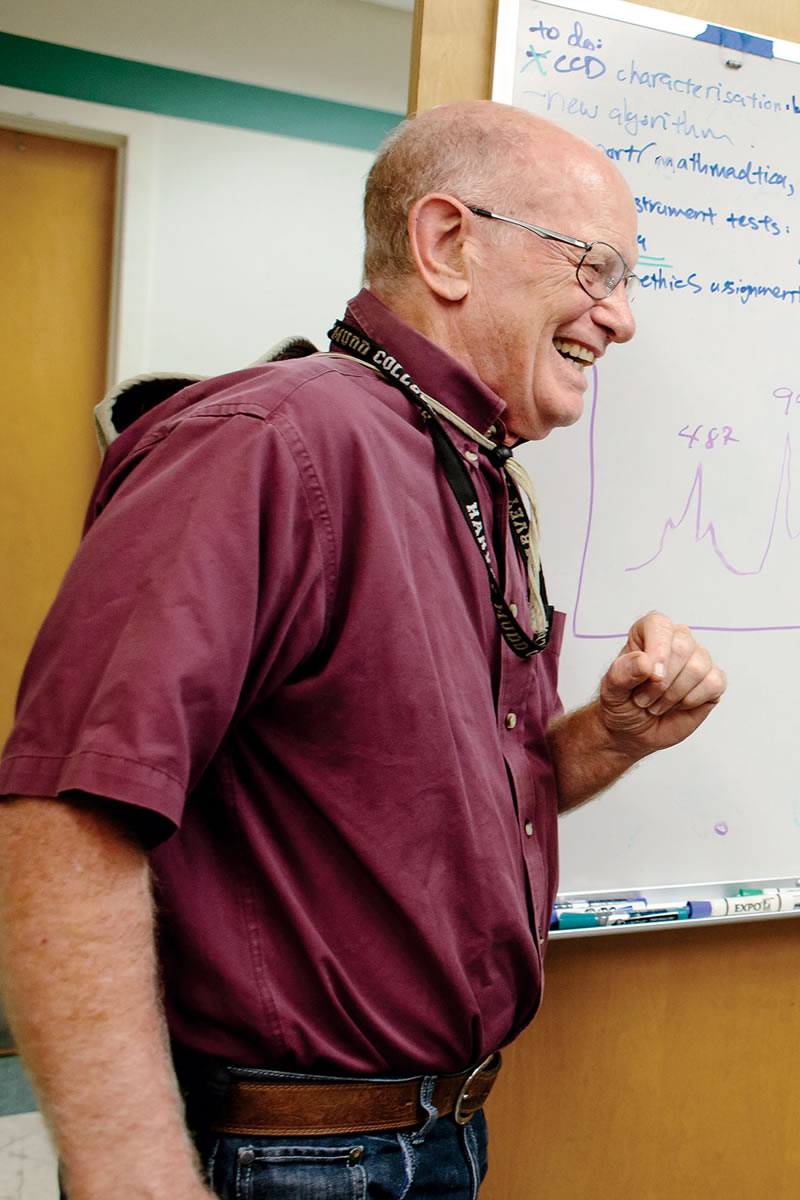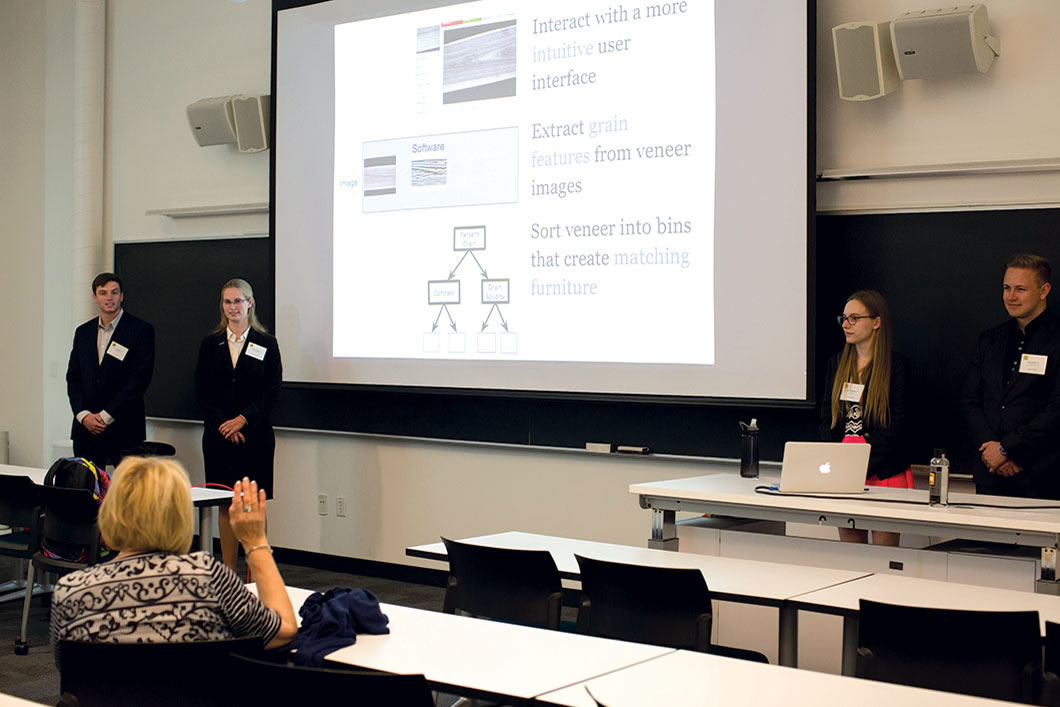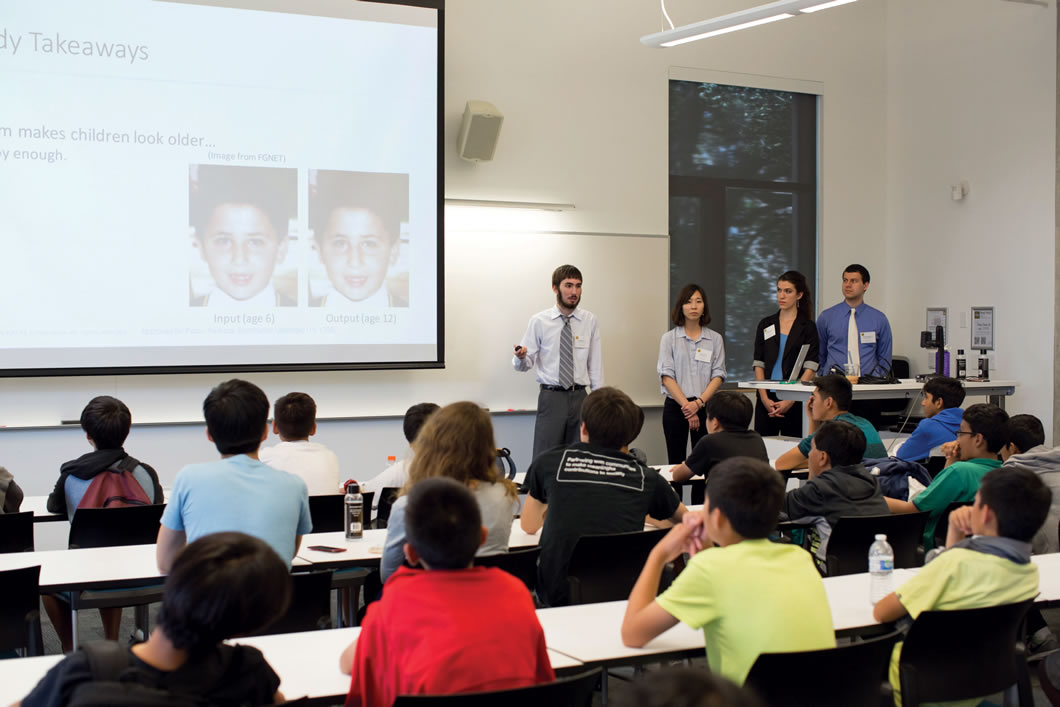Clinic Program
Pivotal Partners
Liaisons provide essential wisdom
The strong alliance of industry and education continues in the Harvey Mudd College Clinic Program after more than 50 years. Under the guidance of student project managers, faculty advisors and liaisons from sponsoring organizations, Clinic teams have completed more than 1,500 projects.
The role of liaison is critical. President Maria Klawe remarked that liaisons bring deep knowledge in areas that Harvey Mudd students may not have yet encountered. Liaisons maintain close contact with the team, outline the project requirements, approve the team’s proposal for accomplishing the work and receive weekly progress reports. Student and faculty interaction with the sponsor’s representative is a key ingredient for a successful project and a valuable educational experience.
A record 124 liaisons—each project has up to four— participated in Clinic during the 2015–2016 academic year. Alumni made another strong showing (23) this year, and there were two parent liaisons. Here’s what selected liaisons had to say about some of this year’s 44 Clinic projects and their teams.
M.C. Storrie-Lombardi P13
Executive Director
Kinohi Institute
Engineering Clinic | Spatial Heterodyne Raman Spectrometry
Design, build and test a device for capturing the Raman spectra of organic molecules using spatial heterodyne spectrometer optical design operating with near-infrared excitation light. The team’s non-contact, non-destructive material identifying spectrometer has promising applications in many fields.
How well did the team meet its stated project goal?
In nine months, the team succeeded in designing and building the world’s first spatial heterodyne infrared Raman spectrometer. The device is at least two orders of magnitude more sensitive than current Raman spectrometers and produces significantly less damage to microbial or human cells than current generation devices.

What impressed you about the students’ approach to the problem?
The team members worked together seamlessly, never gave up when faced with unanticipated difficulties and seemed unphased that they were building a completely unique device.
What was it like to work with your Harvey Mudd team?
Working with this team was a repeat of my early experience 17 years ago: completely delightful. Weekly team meetings were rich in new ideas, novel ways of tackling problems, and always good humor and camaraderie.
James Huey
Wood Finish Coordinator
Steelchase Inc.
Computer Science Clinic | Classifying Wood Veneer
Maximize customer satisfaction by minimizing the perceived variation among pieces of veneer by building a model that sorts veneer into categories based on its color and grain characteristics.

What impressed you about the students’ approach to the problem?
We were most impressed with the development of their team, how they assigned specific duties to each team member and how they came together to work as a team. We also liked the approach of the weekly Web-Ex meetings for updates. We appreciated their willingness to travel to the manufacturing plant several times throughout the year to gain a better understanding of our processes that we previously did manually.
What’s next for this project?
After the success of the prototype development and implementation to our plant process, we have seen a dramatic improvement (40 percent) with our veneer classification system. Our next step is to expand the program to include all of our standard veneer species.
Sarah Lichtman ’14
Group 39, Advanced Concepts and Technologies Group;
Air, Missile and Maritime Defense
MIT Lincoln Laboratory
Engineering Clinic | Wireless Coordination Testbed
Build a model of clock synchronization and a wireless coordination testbed to compare the performance of synchronization architectures, algorithms and hardware.
How well did the team meet its stated project goal?
The team members did an excellent job on this research-heavy project. I think they learned a lot, and their work certainly granted us valuable insight into this problem of synchronization techniques.
What impressed you about the students’ approach to the problem?
Each student carved out their own area of expertise within the project and did impressive research and analysis to understand and communicate each piece’s impact on the project.
Kurt Melstrom
Surgeon
City of Hope
Engineering Clinic | Portable Surgical Retractor Attachments
To improve surgery visibility and mobility, design and prototype retractor attachments that are cordless, longlasting, sterilizable and capable of maintaining a safe temperature to prevent injury to surgeons and patients.
Why Clinic?
I was interested in working with young students with an educational background different from my own. I had good ideas about technology I would like to use in my job, but I do not have an engineering education to build them.
How well did the team meet its stated project goal?
The team did a great job bringing an idea on paper to a fully working product. It still needs some refinements before being practical to use.
What impressed you about the students’ approach to the problem?
I was most impressed that the students worked as a group together and alternated tasks. I was also impressed with the way they set deadlines and were able to keep them.
Dave Zielski
Executive Director
Raincatcher
Global Clinic | Low-cost Monitoring of Remote Rainwater Catchment Tanks
Design and build a device to communicate details about rainwater catchment systems in regions of Kenya, Uganda and the Navajo Nation. Device will allow collection of quantitative data and improve system reliability.

What was it like to work with your Harvey Mudd team?
It was a fantastic experience. We met weekly, and they were able to visit one of our domestic projects. They were able to quickly account for the problems and get them addressed for the final project. I was able to guide them, but they took control to make it happen.
What’s next for this project?
We are evaluating it now and plan to present it to the annual board of directors meeting in late August to get them behind it so we may be able to talk to donors about funding its deployment.
Nick Orlans
Principal Engineer
Mitre Corporation
Computer Science Clinic | Digital Aging
Digitally age a face image of a person, building off existing image processing techniques, focusing on young subjects to better help identify missing children when their images are presented to automated tools and human observers.
Why Clinic?
The Clinic supports MITRE’s interest in STEM education and research in areas where we know of real-world problems that need to be addressed.

How well did the team meet its stated project goal?
The goal for forensic-quality age simulation was not fully achieved, but some parts of the work were well done and successful.
What impressed you about the students’ approach to the problem?
The user study was particularly well done, and the final report was comprehensive and complete.
Doug Chudy
Mountain Preserves Manager
Wildlands Conservancy
Engineering Clinic | Micro-Hydroelectric System
Design a micro-hydroelectric system optimized for the area surrounding Oak Glen Preserve that ties into the Southern California Edison grid to offset power usage. Design a smaller system to educate visitors about hydroelectric energy.
Why Clinic?
We chose Clinic for a variety of reasons. After several years of trying to achieve the same goal in-house and with very inexperienced (technically speaking) staff, it was time for a new avenue of thought and progression. Also, being a nonprofit, and one in which our mission involves increasing the quality of life for children (as well as adults) through preservation of open space and free educational programs, we are humbled by the College’s thoughtful contribution toward our mission.
What was it like to work with your Harvey Mudd team?
Working with the team was a great professional experience. They were always on time for conference calls (even when we were not) and able to solve complex challenges through dedicated efforts. The team was very patient, both with our constant need for changes to the overall plan as well as when reaching out to contact various offices and industry professionals who would often not be available for weeks at a time. In the end, the team accomplished what it had set out to do in each task.